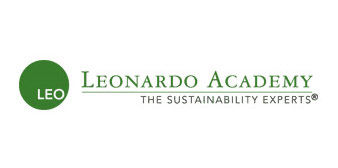The Pyramid of Conservation

Whether they’re building a new house or improving a well-loved home, energy-conscious homeowners everywhere are trying to lower energy use and costs. Even with the best of intentions, however, consumers are overwhelmed by too much information, which causes many of them to give up long before they screw in their first CFL light bulb. To remedy this situation,Minnesota Power created the Pyramid of Conservation as a “cheat sheet” for consumers who want to live a more energy-efficient life.
The Pyramid of Conservation helps homeowners prioritize which of the many energy-saving steps to take. Each of the Pyramid’s ten levels represents different energy-saving measures for homes. For best results, the Pyramid should be read from bottom to top. The lowest level creates a foundation that supports the upper sections. Not only will a solid base improve the effectiveness of the higher steps, but the bottom actions are also the most cost effective. To visualize the importance of the Pyramid base, think of using solar panels to heat your home while leaving the windows open; the money for installing solar panels was not well spent if the energy they generate goes—literally—right out the windows.
The first step on the Pyramid requires acquiring knowledge about your home’s current energy use. This is best done by having an expert conduct a home-energy audit. Though an audit can be expensive, sometimes as much as $600, many utilities and local governments offer subsidies to offset the cost. Even a full-price audit is worth its weight in carbon emissions because it identifies the problems and will ultimately save the homeowner money. The second step on the Pyramid includes low-cost or no-cost actions that mainly involve changing habits, such as setting the thermostat back a few degrees at night and unplugging electronics when not in use. The third step is switching to CFL or LED light bulbs to improve the efficiency and cost-effectiveness of home lighting.
Continuing up the Pyramid, step 4 may require outside help. Air sealing--which is not the same as caulking--should be performed by a professional for best results. Paying special attention to the attic and other places with hidden thermal bypasses will yield a quick result.
Many people skip straight to step 5, appliances, but the energy-efficiency measures in steps 1-4 will help the efficient appliances purchased in step 5 save even more energy. Though new appliances can be expensive, replacing machines that are over 10 years old will save money in the long run. This step also proves that bigger is not always better, especially with regard to refrigerators. In this case, EnergyGuide labels should influence decisions.
Working higher up the Pyramid will require increasing time and money investment. The next steps are step 6: upgrading the home’s insulation and ventilation; step 7: re-evaluating hot-water needs and equipment; step 8: upgrading the home’s heating and cooling equipment; step 9: replacing windows; and step 10: using alternative energy sources (solar and wind energy). A professional should perform these steps for best results. However, the very top actions are least likely to provide a noticeable payback, especially if the steps at the base have not been taken.
Knowing where to begin when greening a house can be complicated, but Minnesota Power’s Pyramid of Conservation can simplify the process. By working up the Pyramid, homeowners can make better-informed decisions about what is right for them. Better-informed decisions lead to more efficient energy use and lower energy bills. For even more help, WorldGreen.org offers homechecklists that can guide homeowners to making sustainable decisions on energy as well as on purchasing, waste, and water conservation. Between the Pyramid of Conservation and WorldGreen’s checklists, homeowners have the tools they need to improve their homes—and their home planet.

